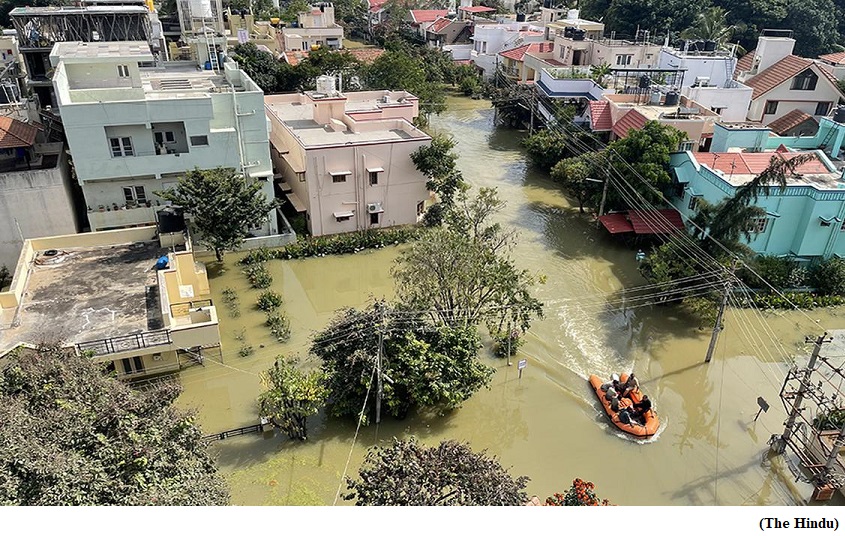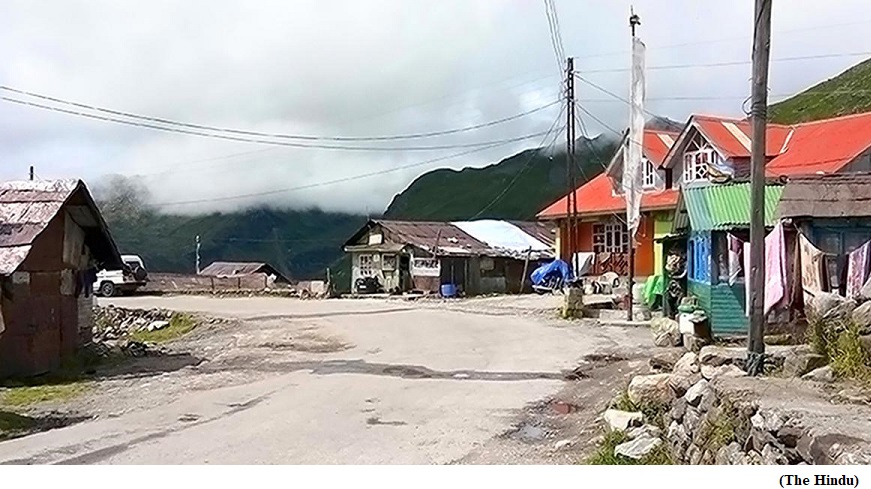Environment Impact Assessment must be done before allowing urban development projects: Supreme Court (GS Paper 3, Environment)

Why in news?
- The Supreme Court has urged legislators and policy experts to ensure that Environment Impact Assessment (EIA) studies are done before giving the green signal for urban development projects in India’s cities.
Background:
- In a judgment, a Bench of Justices referred to media reports of how haphazard urban development has ruined the ‘Garden City’ of Bengaluru as witnessed during a major spell of rain in September 2022. The city struggled for drinking water while it lay submerged after the downpour.
- The judgment came in regard to a proposal to convert independent residential units into apartments in Chandigarh Phase 1. The court prohibited the move in order to protect the heritage status of ‘Corbusian’ Chandigarh.
Key Highlights:
- It said that the legislature, the governments and experts should put their heads together “to make necessary provisions for carrying out Environmental Impact Assessment (EIA) studies before permitting urban development”.
- The apex court directed the copies of the judgment to be forwarded to the Cabinet Secretary to the Union of India and to the Chief Secretaries of all the States to take note of it.
CDSs:
- The judgment referred to a publication by the United Nations Environment Programme (UNEP), which underscored that more than half of the world’s population was now living in urban areas.
- The publication further noted that by the year 2050, more than half of Africa and Asia’s population would live in towns and cities.
- It recognised that City Development Strategies (CDSs) have shown how to integrate environmental concerns in long-term city visioning exercises.
EIA:
- The publication defines EIA to be an analytical process or procedure that systematically examines the possible environmental consequences of the implementation of a given activity (project).
- It is aimed to ensure that the environmental implications of decisions related to a given activity are taken into account before the decisions are made.
EIA in India
- EIA was introduced in India in 1978, with respect to river valley projects. Later the EIA legislation was enhanced to include other developmental sections.
- EIA comes under Notification on Environmental Impact Assessment (EIA) of developmental projects 1994 under the provisions of Environment (Protection) Act, 1986.
- Besides EIA, the Government of India under the Environment (Protection) Act 1986 issued a number of other notifications, which are related to environmental impact assessment.
- Environmental clearance or the ‘go-ahead’ signal is granted by the Impact Assessment Agency in the Ministry of Environment and Forests, Government of India.
China, Bhutan officials meet in Kunming, agree to ‘push forward’ boundary talks
(GS Paper 2, International Relation)
Why in news?
- Recently, China and Bhutan agreed to “push forward” a three-step roadmap as an expert group meeting held boundary talks in the southwestern Chinese city of Kunming.

Key Highlights:
- Both sides “agreed to simultaneously push forward the implementation of all the steps of the Three-Step Roadmap” as well as “increase the frequency of the expert group meetings and to keep contact through diplomatic channels on holding the 25th Round of China-Bhutan Boundary talks as soon as possible”.
- Following the talks, both sides held a handover ceremony for Chinese donations of supplies.
Background:
- Bhutan and China in October 2021 signed an agreement on a “Three-Step Roadmap for Expediting the Bhutan-China Boundary Negotiations”. Bhutan’s Foreign Ministry said then the MoU on the Three-Step Roadmap would “provide a fresh impetus to the Boundary Talks.”
- So far, 11 expert group meetings and 24 rounds of talks have been held since the process began in 1984.
Areas of dispute:
- Negotiations in the 24 rounds have focused broadly on two areas of dispute – Doklam and areas along the western borders of Bhutan and near the India-China-Bhutan trijunction, and the Jakarlung and Pasamlung valleys along Bhutan’s northern borders.
- However, China has recently appeared to broaden the scope of the dispute by also bringing in areas along Bhutan’s eastern borders in Sakteng wildlife sanctuary, which borders India’s state of Arunachal Pradesh. The Chinese Foreign Ministry subsequently referred to disputes in “western, middle and eastern” sections.
- Some observers viewed that move as a pressure tactic to push Bhutan to accept China’s earlier reported offer of a swap of Doklam in the west, which China views strategically, in exchange for Bhutan to retain its northern territories.
- The western areas, measuring 269 sq km, are a particularly sensitive bone of contention given the proximity to India, especially after the 2017 stand-off between Indian and Chinese troops in Doklam. Since the stand-off, China has stepped up its military presence in the disputed plateau.
- The Jakarlung and Pasamlung valleys along Bhutan’s northern borders with Tibet measure 495 sq. km.
Infrastructure push by China:
- China has recently launched an infrastructure push in Tibet to build what it calls “xiaokang” (moderately prosperous) frontier villages, to establish civilian settlements in areas, including disputed ones, along the Tibet-Bhutan border.



